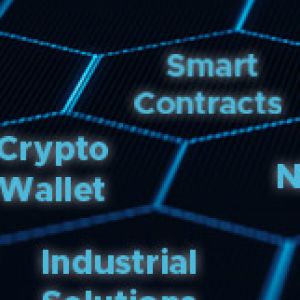In this blog, discover how development services for blockchain solutions services are used in different industries to help solve real-world issues, including the use case of invoice reconciliation and dispute resolution.
Blockchain for Reconciliation and Dispute Resolution SolutionsPosted by MuBlockchain on February 3rd, 2021 When inconsistencies emerge around financial settlements, every industry experiences productivity hit. For example, in the supply chain, processes that might even be part of an automated procure-to-pay workstream grind to a halt when the paperwork obtained from an invoice and related items does not fit. Even data-driven industries such as telecommunications are affected, with billions of records for mobile roaming charges and associated payments being reconciled by hundreds of mobile carriers. Challenges | Invoice Reconciliation Transactions are kicked out to an analyst for manual processing when documents from the different parties disagree. It is then necessary for both sides to spend much time and effort working towards a resolution. That takes people away from what a company can add value to, such as analyzing data to optimize processes. Also, the effect on working capital is important. Companies keep millions, if not hundreds of millions, in reserve to minimize liability and ensure cash is on hand to cover mistakes that are usually fixed months down the road. While only a very small percentage of all transactions usually include conflicts, a small change in the dispute resolution process may produce a substantial payback. Blockchain Advantages for an Invoice Reconciliation and Dispute Resolution System They include quicker dispute settlements, savings on labor rates by manually settling conflicts, and fewer chances of conflicts not being properly reconciled. Stakeholders find less tied up cash reserves pending for dispute resolution while maintaining good partnerships with partners in the supply chain, manufacturers, and clients. Blockchain-based Reconciliation and Dispute Resolutions | How It Works We at Oodles Blockchain have a replicable approach that transforms multi-party dispute resolution. A blockchain network, which functions as a single source of truth available to approved parties, is the cornerstone of the solution. Automation, allowed by smart contracts and agreed-upon business rules, is the engine driving the solution. Working Flow of the System Participants transmit process data directly from their record systems to the blockchain, giving selected participants visibility (and to no one else, preserving privacy in an environment where multiple parties are participating). This method often prevents mistakes that come from processes of manual data entry. To assess the root cause of any conflict, business logic identifies inconsistencies between data elements and records. Is the difference, for example, in the supply chain attributable to a unit of measure mistake, or a distribution position error, or the quantity delivered? Everyone needs to agree on data, text, and voice usage and rates for payments for roaming fee settlements in the telecom room. As new data becomes available, all comparisons get conducted on a near real-time basis. As a result, as they arise, relevant stakeholders report and act upon conflicts, significantly decreasing the duration of the conflict resolution period. Automated rules for dispute resolution synthesize data on differences to reach consensus. This decision, along with the rules in place, remains clear to all the appropriate participants. Final consensus choices broadcast to the recording system. Within the blockchain distributed ledger, all records, inconsistencies, and subsequent decisions remain stored to create a detailed, permanent audit history. Like it? Share it!More by this author |



